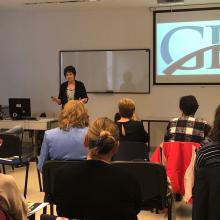ICT for independent living and elderly care at home

European policies such as the Social Investment Package for Cohesion and Growth (SIP), the Employment Package for a Job-rich Recovery and the Innovation Partnership on Healthy and Active Ageing (EIPAHA), are driving the policy agenda for the coming years in the field of long-term care. Their strategy is focused on:
- reducing growth in long-term care needs
- increasing access to and quality of care services
- increasing productivity and jobs in the care sector
- reinforcing the efficiency of long-term care systems
These policies highlight the importance of information and communication technology (ICT)-based care services in achieving these objectives. These services range from assistive to robot technologies, and include telecare, social networking, virtual reality and other online services. Research has demonstrated their value in helping elderly people to be more independent and cope with their physical and mental conditions. ICT-based care services also help carers to deal with stress and to carry out their care tasks better. They can also reduce the use of more expensive care services, avoiding the need for hospital admissions and shortening the length of stays in institutions.
However, ICT-based services for long-term care are only being used on a small scale in Europe. Little scientific evidence of their effectiveness and efficiency is available. In addition, there are technological barriers for end-users, inefficient business models, and difficulties in integrating these services into the care system. These challenges have been identified in previous IPTS research.
IPTS is therefore leading a programme of research to map and develop more systematic and scientific evidence on ICT-based services for independent living and elderly care at home. This programme aims to help European policy makers make decisions on how to design, implement and transfer successful strategies for long-term care, based on technological solutions.

 Multiplier event Hungary - PROMPT
Multiplier event Hungary - PROMPT










 Back to the top
Back to the top